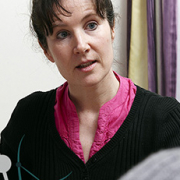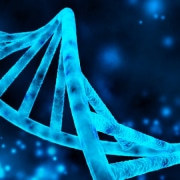Cancer immunotherapy: genomic insights, promises and challenges
One-in-two people are likely to develop cancer, according to new research. With advances in genomics, can we improve the outcomes?
A recent study estimated that one in two people born after 1960 in the UK would be diagnosed with some form of cancer during their lifetime. While this is scary, the encouraging flip-side is that half of us should escape, writes Alain Li Wan Po.
Over a hundred years ago the Nobel Prize winner Paul Ehrlich suggested that the molecular surveillance exerted by our immune system, referred to as immunosurveillance, was what protected us from cancer. Defective cells more likely to develop into renegade cancer cells are recognised by our immune cells and are marked for destruction. We also now know that DNA repair systems encoded by tumour suppressor genes form another layer of protection by acting as guardians of our genome. The breast cancer genes BRCA1 and BRCA2 that regularly hit the headlines, as was the case when Angelina Jolie announced her predicament, are just two such genes.
Mounting a defence
As a defence system, our immune system has to recognise helpful from disease-causing microbes, and healthy cells from defective and disease-causing cells. Failure to do this effectively leads to auto-immune diseases, to abnormal reactions to drugs and to potentially life-threatening responses to infection, such as the effects of Ebola virus.
It is no surprise, then, that the pharmaceutical industry and research funders worldwide have invested huge sums in research aimed at controlling the immune system for therapeutic ends. These investments are now yielding rich rewards, frequently thanks to genomic insights.
Recognising foes
The immune system responds to foreign bodies such that any subsequent exposures to the same invader elicit rapid recognition. This is based on immune ‘memory’ of three-dimensional surface proteins known as epitopes; immune recognition induces speedy formation of specific defence molecules. These are the B and T cells of the adaptive immune system; activated B cells create antibodies to bind specifically to and neutralise the target invaders, and T cells destroy them.
These immune capabilities form the basis of serum therapy (as used to treat some Ebola cases from the current West African epidemic) and prophylactic vaccines, also prominent in the news owing to recent outbreaks of measles in the United States following reduced vaccine uptake.
Cancer cells as Trojan horses
Although the immune system can identify and destroy cancer cells, these cells evolve over time by ongoing genetic mutation to actively evade the immune system by inducing a phenomenon known as host tolerance. They do this by displaying surface molecules that inactivate T cells, acting as Trojan horses. These same mechanisms are used by the immune system to recognise host or ‘self’ molecules, preventing the development of auto-immune diseases.
An approach to counter this immune tolerance caused by cancer cells is to block the inhibitory signals. This and other similar avenues are so promising that the leading journal Science recognised cancer immunotherapy as the 2013 breakthrough of the year.
Clinical success
Highly specific blockage of inhibitory signals to T cells has yielded exciting results in the clinic: two monoclonal antibody drugs acting through this mechanism and known as immune check-point inhibitors have been licensed for the management of advanced melanoma; ipilimumab in March 2011 and nivolumab in December 2014. Each drug targets a different T cell co-receptor to block their activation, and has been shown to provide a survival benefit.
In one trial of nivolumab in metastatic melanoma, 73% of the subjects given the monoclonal antibody were still alive at one year compared with 43% of those given the normal dacarbazine treatment.
That the battle is not won is shown by the fact that 5.1 months into the trial, 50% of the patients showed disease progression even on nivolumab, and 27% of the patients given the drug still died by the end of year one. Combination therapy improves outcomes, but only marginally, and increases the cost, which is already unaffordably high for most people and healthcare systems.
Personalised therapy
Can those most likely to benefit from immunotherapy be identified? If so, immunotherapy could be personalised, its cost-effectiveness improved, and those unlikely to benefit spared its adverse effects and the lost opportunity to be treated with alternative agents. No robust predictor of response to immunotherapy is yet available, but a recent genomic study yielded promising results.
Cancer cells mutate rapidly, and in doing so develop new traits that allow them to hide from the immune system and acquire invasive properties. However, they also generate a whole host of different surface markers that can be recognised as new epitopes (also called neoepitopes or neoantigens) by immune cells.
It would appear that when these markers mimic those of microbes, the cancer cells become more vulnerable to recognition by antibodies directed against the co-receptors on the T cells. This predilection may have evolved over evolutionary time or by more recent exposure to microbes with similar surface proteins to those of cancer cells, or both. Insight into these mechanisms should enable the design of more effective cancer immunotherapy, and perhaps even of prophylactic cancer vaccines.
Cancer immunotherapy is effective. The remaining question is the extent to which it can be made more effective; genomic studies are likely to help find the answers.
Alain Li Wan Po is editor-in-chief of the Journal of Clinical Pharmacy and Therapeutics, and is a fellow of the Royal Pharmaceutical Society and the Royal Statistical Society. Alain has written more than 100 papers in scientific and medical journals, and authored several books including Genomic Medicine: 101 Keynotes and Concepts.









